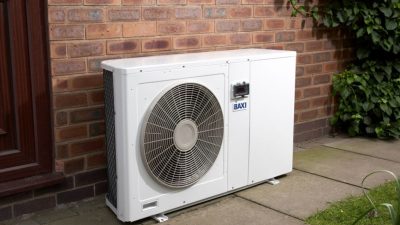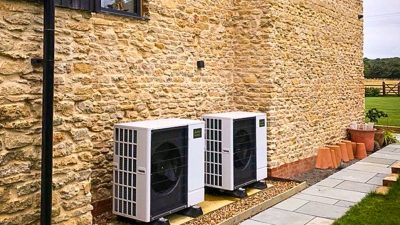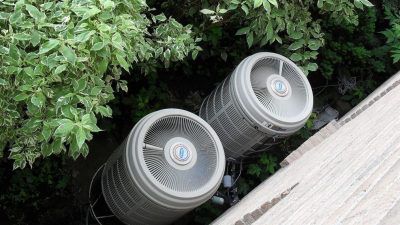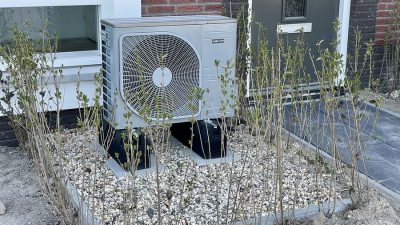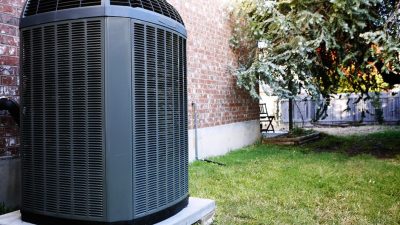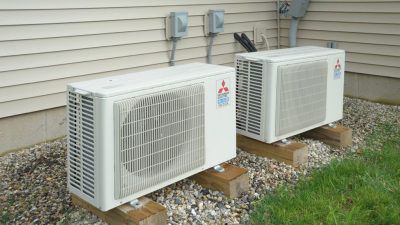Are you looking for an energy-efficient way to heat and cool your home? Heat pumps are a popular solution, but do they need to be in the shade to work best? In this article, we’ll explore the impact of shade on heat pump performance.
We all know how hot it can get during summer months, and how important it is to have a reliable cooling system. But with so many options out there, it can be difficult to decide which one will give you the best bang for your buck. Heat pumps are known for their energy efficiency, but do they need to be in the shade for them to work properly?
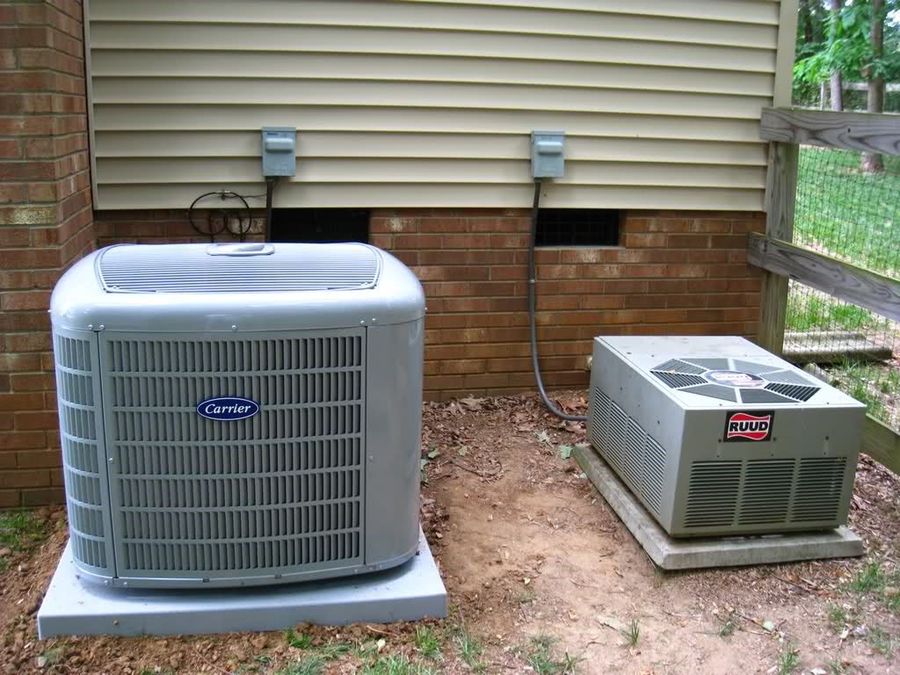
Do Heat Pumps Need To Be In The Shade
In general, heat pumps do not need to be installed in the shade, but they should be installed in a location that is free from obstructions that could block airflow, such as bushes or trees. The heat pump’s outdoor unit needs access to a sufficient amount of outdoor air to function efficiently, so it’s important to ensure that the unit is installed in a location with adequate ventilation.
Heat pumps can be installed in a variety of locations, including both sunny and shady areas. The optimal location for a heat pump will depend on several factors, including the local climate, the size of the unit, and the layout of your property.
It’s worth noting that excessive exposure to direct sunlight can cause the heat pump’s outdoor unit to work harder than necessary, reducing its efficiency and potentially shortening its lifespan. In some cases, installing the unit in a shaded area can help improve its efficiency and extend its lifespan. However, the specific location and orientation of the unit will depend on the layout of your property and other factors, and it’s recommended to consult with a professional HVAC contractor to determine the best location for your heat pump.
Benefits Of Shading Heat Pumps
Shading a heat pump offers many benefits. It can help reduce energy consumption and increase efficiency, leading to significant cost savings. Here are just a few of the benefits of shading a heat pump:
- Heat Pump Efficiency – Shading helps keep the temperature around the heat pump down, resulting in more efficient operation. The air around the unit stays cooler and this increases efficiency, reducing energy costs by up to 10%.
- Energy Savings – By keeping the air around the unit cooler, shading your heat pump helps it operate more efficiently and use less energy overall. This leads to lower monthly utility bills each month!
- Reduced Noise – Shading helps reduce noise from your heat pump due to decreased temperatures and improved airflow around the unit. This is especially helpful if you live near neighbors who might be bothered by loud noises from your unit.
- Air Quality Improvement – Shading helps improve indoor air quality by filtering out dust, pollen and other airborne particles that can cause allergies or respiratory problems for those living in your home. This can also lead to fewer repairs on your system since dirt and debris won’t build up as quickly without proper filtration.
By shading your heat pump, you can enjoy all these advantages while maintaining optimal comfort in your home throughout all seasons! Investing in some form of shading today will pay dividends in terms of money saved and improved health for years to come!
How To Shade A Heat Pump
It’s no secret that heat pumps need to be properly shaded in order to function optimally. Proper shading can not only maximize the efficiency of the heat pump, but also protect it from sun damage. Here are some of the best ways to shade a heat pump:
| Shade Type | Benefits | Drawbacks |
|---|---|---|
| Trees | Natural look & cooling effect | Slow to grow & costly to remove |
| Awnings | Quick & easy installation | May need replacing over time |
| Fabric | Lightweight & flexible | Can tear or wear over time |
Shading with trees is an attractive option that provides natural beauty and cooling effects. The downside is that it can take many years for trees to reach a size large enough to provide adequate shade. Once they reach this size, it can be costly and difficult to remove them if needed.
Awnings are a great way to quickly and easily provide shade for any type of heat pump. These shades come in various colors and styles, and they’re relatively inexpensive compared to other shading options. The downside is that they may eventually need replacing due to weathering or tearing over time.
Fabric shades are another popular choice because they’re lightweight and easy to install. Plus, they come in many colors so you can find one that fits your home’s aesthetic perfectly! The downside is that fabric shades can be susceptible to tearing or wearing down over time due to wind or debris hitting them.
Shading your heat pump is essential for ensuring its optimal performance and longevity. Whether you opt for trees, awnings, or fabric shades, make sure you choose the right shading option for your specific needs so you get maximum protection from sun damage while enjoying all the benefits of having a well-functioning heat pump!
Factors To Consider When Deciding Where To Place A Heat Pump
Shading a heat pump is essential for its optimal performance, but it’s also important to consider other factors when deciding where to place your heat pump. Temperature fluctuations, weather conditions, energy efficiency, and installation costs should all be taken into account.
First, if you live in an area with extreme temperature fluctuations, then proper placement of your heat pump can make a big difference in the amount of energy it uses. For example, if you live in an area with hot summers and cold winters, putting your heat pump in a shaded location can help it maintain a more even temperature without having to use extra energy.
If you live in an area that experiences extreme weather conditions like heavy rain or snowfall, then again you’ll want to make sure your heat pump is located in a shaded spot. This will help protect the unit from potential damage due to moisture or condensation buildup. Additionally, putting your heat pump in the shade can reduce the amount of direct sunlight that it receives during the day and help keep its internal components cooler which will increase its overall energy efficiency.
Finally, before installing your heat pump consider the cost of installation and how much time and effort will be needed to get it up and running properly. If you plan on doing the job yourself then make sure you know exactly what needs to be done so that you don’t end up wasting both time and money on something that could have been avoided if given proper thought beforehand.
With all these factors considered when deciding where to place your heat pump, you’ll be able to maximize its performance while ensuring that your energy bills stay low for years to come. Investing some time into finding the right spot for your heat pump can go a long way towards keeping it running smoothly for many years down the road.
Alternatives To Shading
Heat pumps don’t have to be in the shade. There are several alternatives that can help reduce heat gain and maintain efficiency. Heat-pump-covers, reflective-materials, solar-shading, heat-reflecting-paints and exterior-awnings are all options for reducing direct sunlight on the unit. Heat pump covers can be used to shield the unit from direct light and wind, while reflective materials or paints reflect sunlight away from the unit. Solar shading can also be used to block out direct light and reduce overheating. Exterior awnings are another option for providing shade without completely blocking out the sun.
These alternatives to shading allow you to keep your heat pump in an area that receives plenty of sunlight without sacrificing efficiency or performance. With thoughtful planning and creative solutions, you can enjoy the benefits of natural sunlight without sacrificing energy savings. It’s important to remember though that no matter what alternative you choose, proper maintenance is still key for keeping your heat pump running efficiently and reliably.
Conclusion
We’ve seen that heat pumps need to be in the shade for optimal performance. While it may not always be possible to place a heat pump in a shady spot, taking steps to shade them can help reduce energy costs and ensure that they are running efficiently.
When deciding where to place a heat pump, I suggest considering factors such as location, shape of the building and any surrounding trees or structures. If none of these options are available, other alternatives like reflectors or cooling jackets can also work well.
Overall, shading your heat pump is an important step in ensuring it’s running efficiently and saving you money on energy costs. With careful consideration when placing your heat pump and some creative solutions if necessary, you’ll have much more peace of mind knowing that your system is operating at its best capacity.

